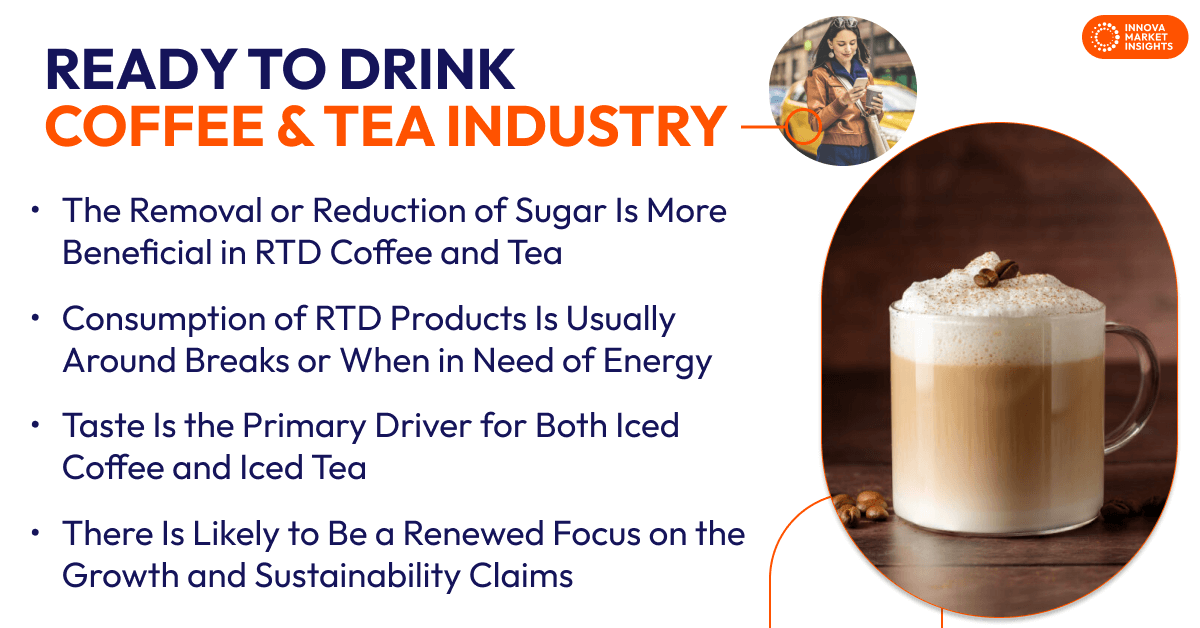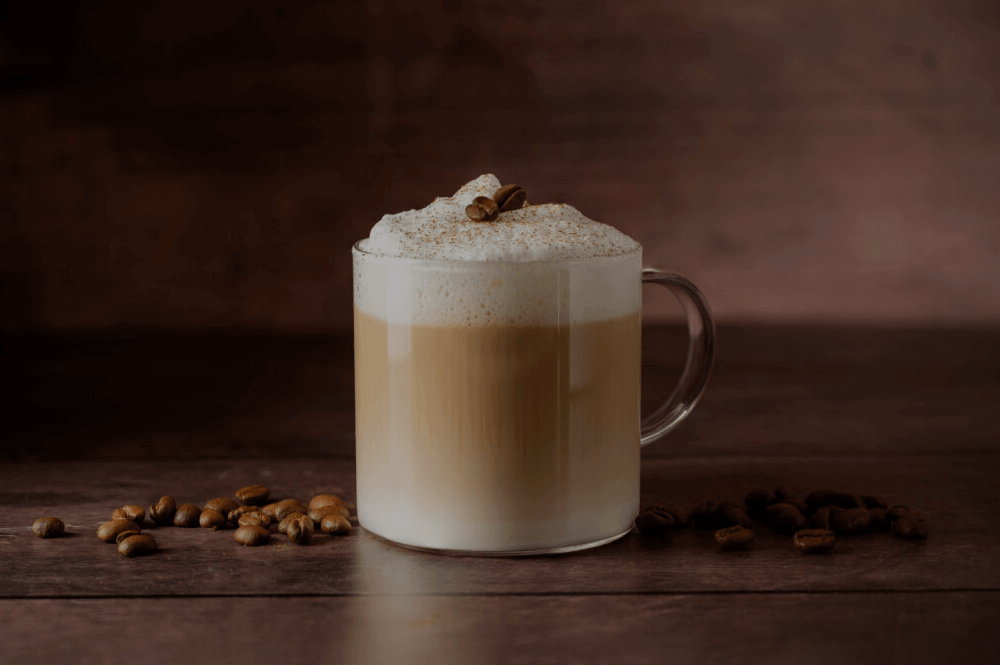October 6, 2025 – Ready-to-drink (RTD) beverages are experiencing an increase in consumption, particularly in the form of iced coffee and iced tea. Popular due to their convenience and perceived health benefits, it is important to understand the market and the future of RTD beverages in relation to consumption trends and sustainability. Innova Market Insights has compiled a report outlining the developments in RTD coffee and tea on a global scale.
Can Brands Be Clearer on Messaging for Ready-to-Drink Coffee and Tea?
For ready-to-drink (RTD) coffee and tea, messaging is key. Brands innovate knowing that emphasis on health and indulgence in their product descriptions can win over shoppers. Where drinks like iced coffee can be seen as indulgent, the taste and emotional reward are fundamental. There are notable influences in the category such as reduced sugar, plant-based ingredients, and added functionality that are changing these assumptions. Compared to iced tea, for instance, which is already closely associated with better-for-you claims, consumers are seeking more indulgent and satisfying flavor experiences, such as fruit-flavored blends, sweet profiles, and hydration.
Better-for-you options for both RTD tea and coffee include reduced sugar, no sugar, and even premium sweetener claims. Due to the significant calorie-related content of sugar-based drinks, better-for-you claims lose sustenance. Therefore, the removal of sugar or its reduction is more beneficial in this case. Equally, the addition of functional ingredients can create renewed focus on energy boosting properties of RTD tea and coffee, especially for younger consumers who want digestion and immunity benefits.
Are Sustainability and Sourcing Central to Long-Term Value Creation?
Sustainability is a topic that is a top concern across many categories, as research by Innova Market Insights shows that almost half of consumers globally are aware of the impact of climate change. In fact, almost the same number of people agree that they would stop or reduce consumption if they knew a food or beverage product was unsustainable. Therefore, environmental and ethical concerns are transforming expectations for RTD beverage brands. In agriculture, coffee and tea crops are vulnerable to climate issues, while for consumers, predominantly younger generations, paying closer attention to sourcing, packaging, and fair labor practices is ever-present.

What Market Factors Are Impacting RTD Categories?
Factors affecting the RTD category are a mix of health, taste preferences, and lifestyle convenience. Low sugar, clean label, and functional options are preferred with the combination of premium, quality flavors. Consumption habits for these sorts of drinks are usually around break times or when in need of an energy boost.
The key area for brands to hone in on is balancing the novelty with familiarity to really maximize opportunity. Economic pressures such as inflation are driving greater cost sensitivity. Not to forget, the various regulatory and ethical scrutiny that is intensifying. Environmental consciousness among consumers is now a core business point to address, with brands under pressure to adopt recyclable packaging, improve supply chain transparency, and commit to carbon-neutral goals or climate-resilient sourcing, more so in coffee than tea.
Are Urbanization and Shifting Mobility Patterns Redefining Consumption?
Urbanization and changing mobility patterns are also reshaping how people consume beverages. In emerging markets like Asia, Latin America (LATAM), and Africa, urbanization has created a demand for convenient refreshment options. In more developed markets, hybrid work models and returning to office settings are changing when and how people drink beverages. On-the-go consumption is popular in crowded urban areas, while at-home and e-commerce options are more important in wealthier regions.
Supply chain concerns are top of mind while manufacturers are trying to keep up with the pace of production for RTD products, hindered by challenges in sourcing essential materials and packaging components. Solutions to this have been mooted and point towards investment in tools such as artificial intelligence (AI) to predict and address disruptions. AI can also be used to innovate formulations by using alternative ingredients. Stakeholders do need to collaborate and address these challenges, while also advocating for sustainable policies.
What Impacts Do Consumer Trends on Ready-to-Drink Coffee and Tea?
Enticing flavors, on-the-go packaging, sustainable formats and added functional benefits create demand and solidify them as daily beverages. Increasing consumption of such beverages can open a world of possibilities for brands to reposition them as more commonly consumable and healthy.
RTD trends show that taste is the primary driver for both iced coffee and iced tea consumption, while the inherent benefits of tea offer a strong foundation for natural claims. Coffee and tea trends show that consumers look to iced coffee and iced tea when they need a break, though those breaks may serve different purposes. Routines are valued for both iced coffee and tea. For instance, iced coffee has a stronger association with morning routines, which often require fuel for the day ahead. Mid-afternoon routines, however, are strongest for iced coffee in a bid to beat the post midday energy slump.
How Important Is Authenticity and Flavor for RTD Beverages?
Combining authenticity with indulgent appeal has attracted moderate interest among shoppers, opening a gap for brands to strike a balance in messaging and stand out in the competitive RTD coffee market. This report found that the top-ranking claims reflected the growing consumer demand for transparency, clean-label formulations, and health-conscious choices in this category. Since no single claim came within being convincingly prominent for a quarter of those researched, it highlights that effective use of claims in products needs to be addressed.
Accessibility needs to be extended to a balance of flavor quality and price, which, during a time of inflation across categories, is essential. If iced coffee and tea can be marketed to appeal as an affordable indulgence, then flavor innovation, freshness, and brand trust can be built.
What’s Next for RTD Coffee and Tea Globally?
Looking ahead at the expectations for ready-to-drink coffee and tea, there is likely to be a renewed focus on the growth and sustainability claims. Indulgence will be a swaying factor when choosing a product, and the quality of the flavor, coupled with freshness, will also impact choice. Health benefits, be it for fortified drinks with vitamins or related to sugar reduction, will be a part of new product development. This will be further innovated with the help of artificial intelligence. Formats of these products will need to adapt to lifestyle changes, which frequently involve consumption during on-the-go moments and convenience. Younger generations have a preference for these formats, and if a product can offer this alongside functional benefits, it can lead to successful launches and penetration in the market.
This article is based on Innova’s RTD Coffee & RTD Tea – Global report. This report is available to purchase or with an Innova Reports subscription. Reach out to find out more
